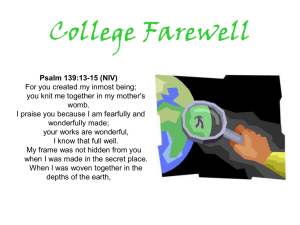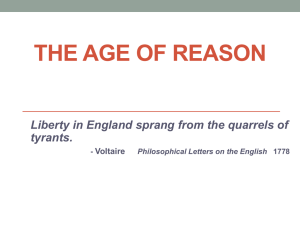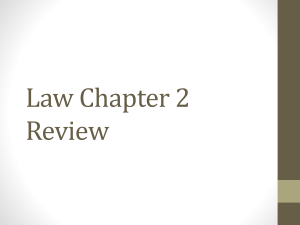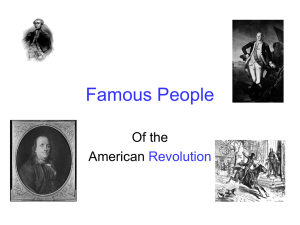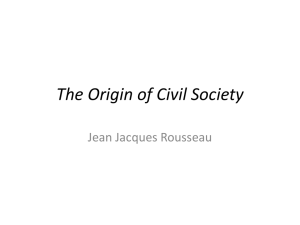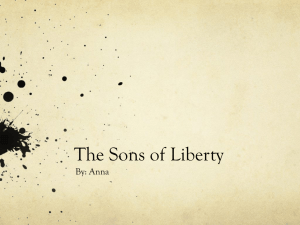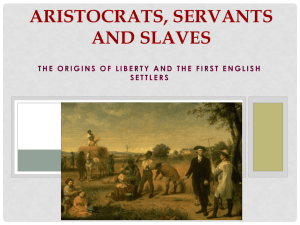Liberty™ Launch Vehicle
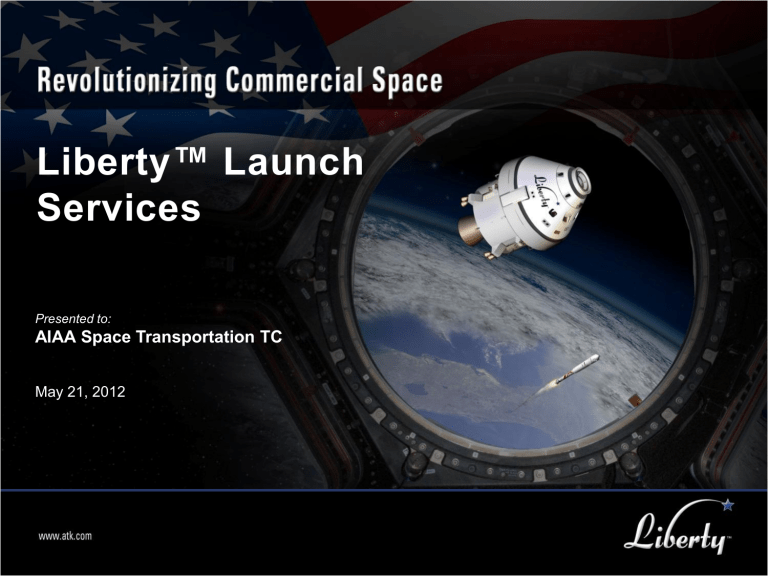
0
Liberty™ Launch
Services
Presented to:
AIAA Space Transportation TC
May 21, 2012
1
Liberty™ Launch Service
• The Launch Vehicle (LV) comprises an
ATK-provided 1 st stage and an EADS
Astrium 2 nd stage.
• The Space Vehicle (SV) for crew transportation includes the GRC
Service Module (SM), ATK/LM composite Crew Module (CM) and ATK
Max Launch Abort System (MLAS).
• For payload delivery missions, the
Space Vehicle includes the SM, payload and associated fairing.
• Ground processing, mission preparation and flight operations leverage existing
JSC and KSC capabilities
Launch
Vehicle
Space Vehicle
ATK MLAS
EADS
Astrium
2 nd Stage
Payload
CONOPS
Ground Ops
Mission Prep
Crew Training
ATK
1 st Stage
ATK/LM
Composite
Crew Module
Flight Ops
GRC/LM
Service
Module
Total Vehicle Mission Integration
2
Liberty™ Launch Vehicle
Provides lift for multiple
Crew vehicles and launch abort systems
Ariane 5 core as
Liberty upper stage
LOX Tank
LH
2
Tank
Vulcain 2
Engine
215 consecutive successful boosters launched
Space Shuttle
Height: 184.2 ft
Gross Liftoff Mass: 4.5M lb
5-segment RSRM as
Liberty
First Stage
Liberty
Height: 300.0 ft
Gross Liftoff Mass: 2.1M lb
LEO Payload 44,500 lbm
48 consecutive successful flights
Ariane 5
Height: 168.5 ft
Gross Liftoff Mass: 1.7M lb
Heritage Systems
3
Crew, Cargo, and Satellite Customers
Commercial Cargo
Satellites
OR
Third Stage
All Commercial
Crew Capsules
Launch Abort
System
Space
Shuttle KSC
Launch
Ares I-X
KSC
Launch
RSRMV
5-segment
Booster
4 successful static tests
220 consecutive successful booster flights
Successful flight demonstration
KSC Launch Complex
Ariane 5
48 consecutive successful flights
Ariane 5 core EPC designed for human-rated Hermes program
Liberty Launch Vehicle l
Reliable two-stage vehicle with capability to lift all commercial crew capsules or lifting bodies to ISS l
Integration of flight-proven, human-rated propulsion systems: the cryogenic Ariane 5 core stage and 5-segment booster
GLEX-001V1
4
Integrated Launch Vehicle
Architecture
5
Liberty Progress/Status
•
Team has been formed and is working
• MLAS completed successful pad abort test
•
Composite crew module fabricated and tested
•
Crew capsule systems in development
• 2 nd stage systems successfully flown 48 consecutive times
•
Four successful tests of Five Segment Booster
• Evolved from 221 successful booster flights
• SAFE hardware being integrated in SIL
Space Vehicle
MLAS
• Developed by NASA and industry
• Solid propulsion main engines and jettison motors
•
MLAS completed successful pad abort test
CM/SM (Spacecraft)
• Capability for 7 crew to ISS
• GN&C evolved from NASA-developed elements
• SM provides cargo capability
•
Composite CM fabricated and tested
Launch Vehicle
Second Stage
• LH
2
/LO
2 cryogenic fuel stage
• Well-understood Vulcain 2 engine certification plan for air start
•
Second Stage evolved from Ariane
EPC with 47 successful flights
First Stage
• 5-segment solid motor
• Liberty aft skirt design
• Electro-hydraulic actuator thrust vector control
•
First Stage completed 4 successful static tests
• First Stage evolved from Shuttle with
220 successful flights and Ares I-X
Integrated Systems
Situational Awareness and Fault
Evaluation (SAFE)
• Complete SV/LV monitoring
• Abort initiation upon detection of specific conditions
Integrated Avionics
• GN&C evolved from NASA-developed elements
• Flight computer resides in CM
GLEX-004V1
6
Ground System
Liberty Ground Ops Process Flow
Astrotech: MLAS Processing
Integration, Fuel load
Off critical path
Space Vehicle
Mate
3 days
VAB: Assembly and Testing
MLP/Crawler
2 nd Stage
Stacking
5 days
O&C:
Crew/Service
Module Assembly off critical path
LCC
Integrated Testing
IST #1: 4 days
IST #2: 3 days
LC39: Pad
Activities and
Launch
5 days
2 nd Stage
Transit by
Ship
1 st Stage
Stacking
12 days
Vehicle
Closeouts
3 days
Recovery & Refurb
Return to O&C
Mission Ops
1 st Stage
Transit by Rail
RPSF: 1 st Stage Aft
Assy off critical path
Liberty Launch System utilizes existing people, processes & infrastructure
Mission Operations
7
TDRSS – NASA
Space Network
MLAS
Separation
2 nd Stage
Separation
Rendezvous/
Prox Ops
ISS Docking
De-orbit burn and SM separation
CM entry
Parachute deploy and water landing
1 st Stage
Separation
Ship
Recovery
Crew Training (start ~T minus 3-6 months)
Mission Planning, Range Coordination (start ~T minus 6-18 months)
Launch (T-0)
Mission Duration (3 – 210 days)
Liberty’s Mission Operations leverages existing systems and proven operations to further ensure mission success
8
Liberty System Dynamic Response
Thrust Oscillation Mitigation
• The Liberty design reduces thrust oscillation effects at the spacecraft interface to acceptable levels.
• This is accomplished through a controlled flightvehicle coupled-system design that ensures the vehicle is detuned from booster pressure oscillations.
• LH2 tank aft of LOX tank
• Stiffened structure for Liberty upper stage loads
• As a result, Liberty thrust oscillation concerns are managed with no mitigation required.
120
120
DM-2 Contour Plot (psi)
DM-2 Contour Plot (psi)
Liberty Axial
Ares I Axial
Modes
100
100
80
80
First
Mode
Second
Mode
60
60
5
5
10
10 Frequency (Hz)
15
15
Frequency (Hz)
20
20
0
6
Ares I
Liberty
4
2
0
-2
-4
DM-2 Thrust Oscillation Response
-6
40 50 60 70 80 90 100 110 120
Time
Liberty Key Enabling Factors l Controlled structural dynamics – 1/6th that of Ares I l Forcing function family flight data validation reduces load to less than half of original l High fidelity coupled fluid-structural analyses have shown responses less than half of original
Q&A-010 V9
Liberty™ Mission Success
9
A
200
Trajectory B
1/1400
Ascent LOC
1/1289
1/1200
150
1/1000
Liberty
1/800
100
1/600
SEP.
50
Color Abort Likelihood
Death is likely
Crew may survive
Crew likely to survive
NASA-STD3000
0
0 200 400 600
Time (sec)
*Consistent with value listed by ULA in Atlas User's Guide
800
1/400
1/200
1/0
Liberty
C Mission LOC
6.0
*CCT-REQ-1130 Requirements
1 – Mission LOC (1/270)
2 – Ascent/Entry LOC (1/500)
5.0
4.0
3.0
2.0
1.0
*1
Liberty Margin
1/300
*2
Liberty Margin
0.0
Liberty
GLEX-007 V1
Commercial Approach
• Liberty draws from heritage commercial programs
• More than 20 years manufacturing, integrating commercial rockets
- Athena, Taurus I, Antares, and
Pegasus launch vehicles
- Strap-on boosters for Delta II and
Delta IV
• Total of 267 successful launches and
47 ground tests
• Ariane 5 is awarded the lowest insurance rates in industry
• Ariane 5 hosts 48 successful consecutive successful missions
•
Re-evaluated heritage processes towards a commercial approach
10
11
Summary
• Liberty will provide the U.S. with unprecedented crew/cargo/satellite capabilities
•
Liberty benefits from extensive use of lessons learned to minimize cost, technical, and schedule risks
•
The Liberty System has a strong sustainable business case
•
Liberty will enable a strong U.S. commercial human space flight program for generations to come
Liberty will provide the safe, reliable access for commercial space
11
